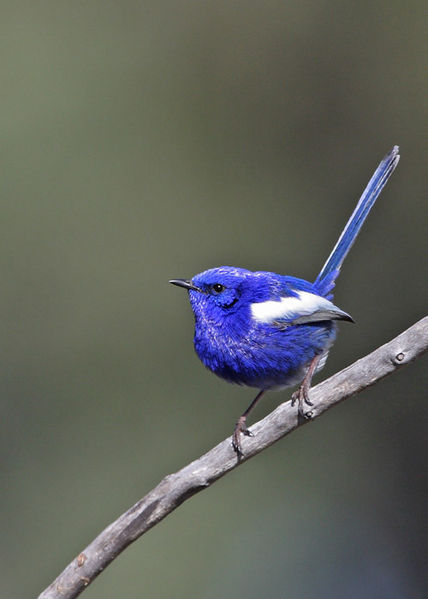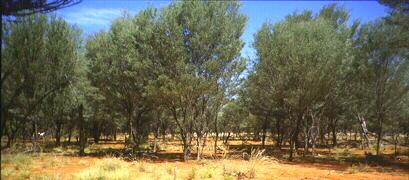 In times of economic distress, government-funded wildlife conservation often takes a back seat to competing concerns. InAustralia, private (non-governmental) groups are taking up some of the slack…and doing a fine job. Over 6,000,000 acres of land are now being privately managed for the benefit of native animals and plants.
In times of economic distress, government-funded wildlife conservation often takes a back seat to competing concerns. InAustralia, private (non-governmental) groups are taking up some of the slack…and doing a fine job. Over 6,000,000 acres of land are now being privately managed for the benefit of native animals and plants.
Wildlife in Peril
Parrot conservation often takes center stage when talk turns to Australian wildlife, but a wide variety of other animals are also in trouble. A recent report (please see below) states that 27 species of Australian birds are now extinct, 20 are critically endangered, 68 are vulnerable and 63 are classified as near-threatened. Australia leads the world mammal extinctions, and severe declines have also been noted among reptiles, amphibians and fishes.
Private Action for Wildlife
I have worked with private reserves and breeding programs in the USA and in Latin America. American turtle experts, often well-funded, have provided homes to thousands of turtles seized in Hong Kong and elsewhere. While on field research in Venezuela, I was amazed at the diversity of wildlife to be found on private cattle ranches…and its near-absence outside ranch boundaries. So it was with great pleasure that I read of Australia’s private conservationists.
According to some studies, only 40% of Australia’s habitat types are adequately protected by government-managed parks. Private groups seek to include within their reserves habitats that are not well-represented within the national park system.
Private conservation groups often cite the freedom to experiment and to take action quickly, unfettered by governmental bureaucracy and red tape, as critical to their success. Having long worked with local, state and federal governments in the USA and abroad, I would tend to agree (most heartily!). Although parrots are not often mentioned in a report released recently (please see below), many species utilize private lands, and no doubt benefit from the protection their habitats receive.
Bush Heritage
The 155,000 acre Boolcoomatta Reserve in South Australia is owned and operated by the conservation group Bush Heritage. The land, comprised mainly of arid scrub and open Mulga woodland (please see photo), is managed for the benefit of native wildlife and plants. Stream restoration, fire management and the trapping of feral goats, foxes and cats has yielded many rewards.
 Populations of formerly rare birds, such as White-Winged Fairywrens (please see photo) and Red Throats, have soared, and the Orange Chat has returned after a long absence. Dusky Hopping Mice have been sighted for the first time ever (a range extension) and the Yellow-Footed Rock Wallaby, absent for over 80 years, is back.
Populations of formerly rare birds, such as White-Winged Fairywrens (please see photo) and Red Throats, have soared, and the Orange Chat has returned after a long absence. Dusky Hopping Mice have been sighted for the first time ever (a range extension) and the Yellow-Footed Rock Wallaby, absent for over 80 years, is back.
Thirty-three other reserves managed by Bush Heritage are home to 50% of Australia’s native birds, 33% of its mammals and 25% of its plants, reptiles and amphibians. Edgbaston Reserve in Queensland boasts the last remaining population of a fish known as the Red-Finned Blue Eye.
Australian Wildlife Conservancy
Another private group, the Australian Wildlife Conservancy, manages 22 reserves. Included among them is the largest cat-free area on the continent. As feral cats are estimated to kill 2 million native Australian animals per day in the northern 1/6 of the continent alone (!!), their removal has a significant impact.
Other AWC reserves support a critically important population of the endangered Gouldian Finch and 90% of the world’s Brindled Nail-Tailed Wallabies, a species that was presumed extinct until its re-discovery in 1973.
Further Reading
The Status of Australia’s Birds
Community Conservation Areas in Australia
FairyWren image referenced from wikipedia and originally posted by Matncathy
Mulga woodlands image referenced from wikipedia and originally posted by Ethyl Aardvark
 That Bird Blog – Bird Care and History for Pet Birds
That Bird Blog – Bird Care and History for Pet Birds




Excellent article showing how citizens shouldn’t leave conservation just up to government, but can take matters into their own hands to preserve species and the environment.
Hello Amy,
Thanks for the kind words and support. Here’s an article on the status of US native species; articles linked at the bottom provide info on Volunteer ops in the USA..project feeder-watch, Christmas Bird Count, etc.
Please let me know if you need any further information. Good luck, enjoy and please keep me posted.
Best regards, Frank Indiviglio.